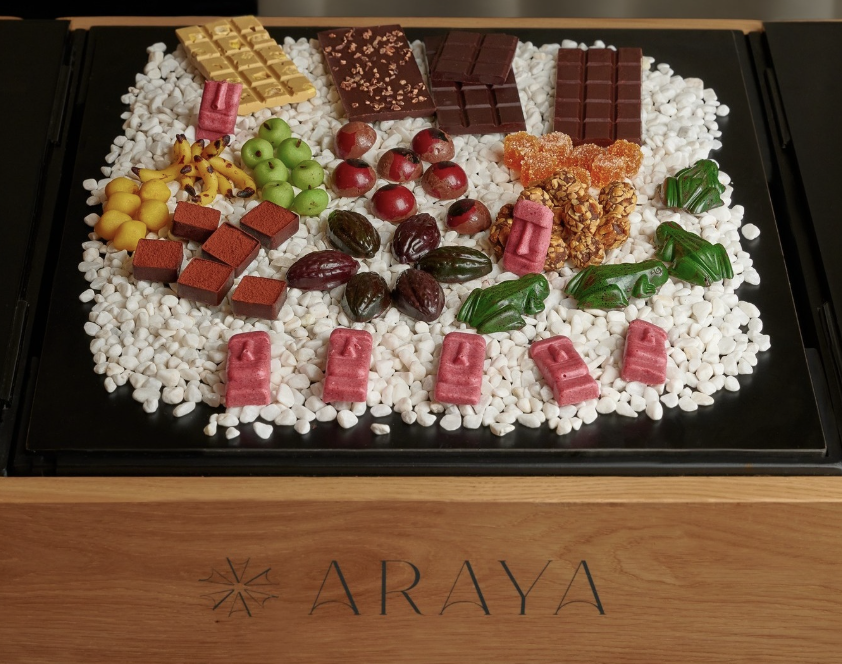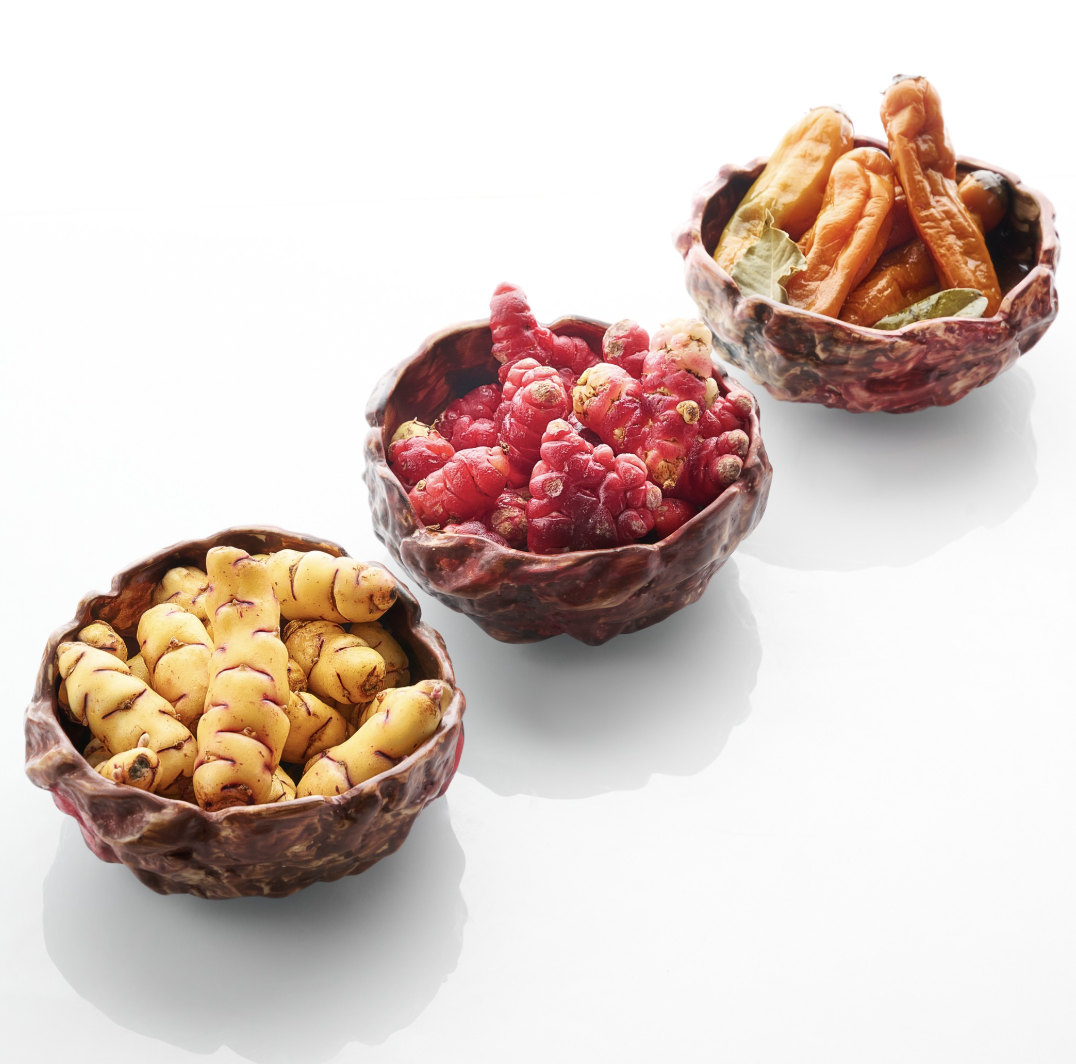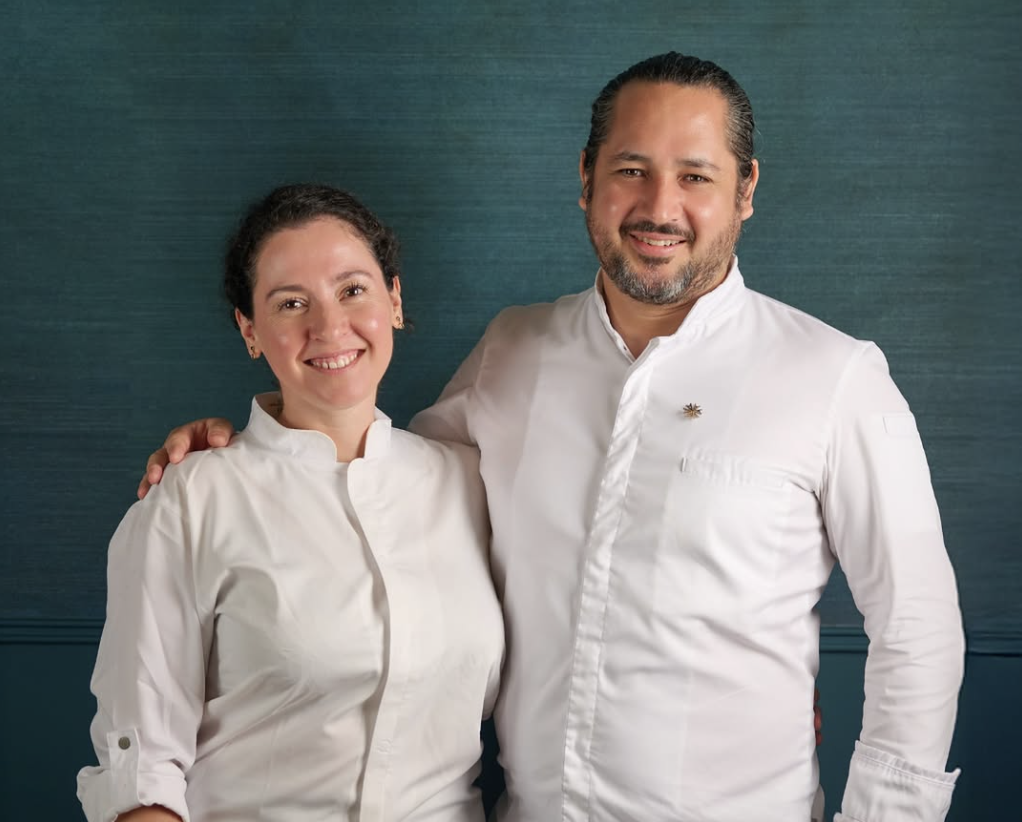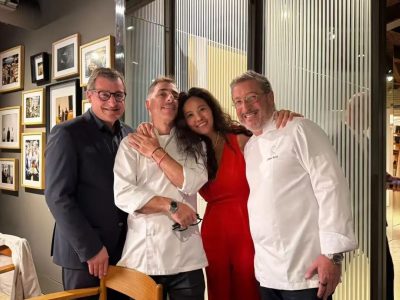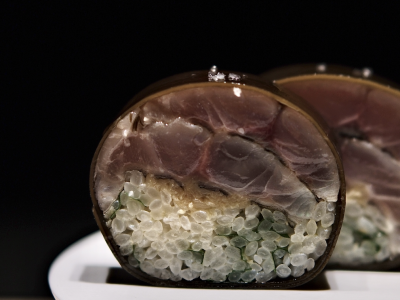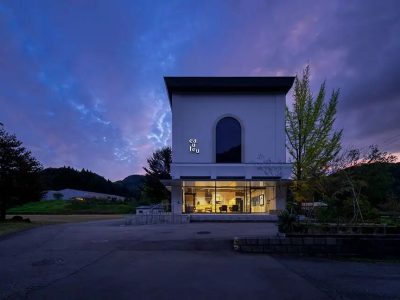Singapore may seem close, but the flight takes more than five hours from Shanghai.
A few months ago, aside from attending the Michelin awards ceremony in Singapore, I finally had the chance to visit my old friends — and couple — Francisco and Fernanda at their Chilean restaurant Araya.I first met them when they were head chef and pastry chef at Nappa in Shanghai.
 (Left) Fernanda Guerrero, (Right)Francisco Araya, at Nappa in Shanghai
(Left) Fernanda Guerrero, (Right)Francisco Araya, at Nappa in Shanghai
Years ago Francisco told me that his dream was to open a counter‑style restaurant serving cuisine from his homeland. That dream is now a reality in Singapore, and in 2024 it became the world’s first Chilean restaurant to earn a Michelin star. This visit was a journey to witness their dream come true; I felt exhilarated, as if wearing rose‑tinted glasses while enjoying the meal.
Araya@Jocelyn 華姐的TastyTrip YouTube
The moment you step inside, bright and lavish South American colours greet you, and the curved long counter invites you to imagine the chefs chatting with guests. The restaurant’s name, “Araya,” is taken from chef Francisco Araya’s surname and symbolizes his and his partner Fernanda Guerrero’s commitment to carrying forward and exploring South American culinary culture. Francisco says his inspiration comes from Chile’s diverse geography, from the Pacific coast to the Andes mountains. Chile is the longest country in the world, with the longest coastline; this means an abundance of seafood as well as meat and vegetables from the mountains. Their cuisine seeks to balance flavours through this geographic structure.
Francisco, born in Santiago, began his career at Alma and later worked at the renowned Spanish restaurant Mugaritz. He is adept at layering flavours with spices, seafood and natural acidity, and loves to start his dishes with a story.
 Francisco Araya@franciscoaraya_r
Francisco Araya@franciscoaraya_r
Fernanda Guerrero, also Chilean, is his partner and co‑founder and serves as Araya’s pastry and baking chef. Fernanda values the role of “temperature and emotion” in food and focuses on expressing natural flavours. Her desserts are inspired by South American ingredients such as dulce de leche, berries, coconut and cacao; they are delicate yet full of layers.
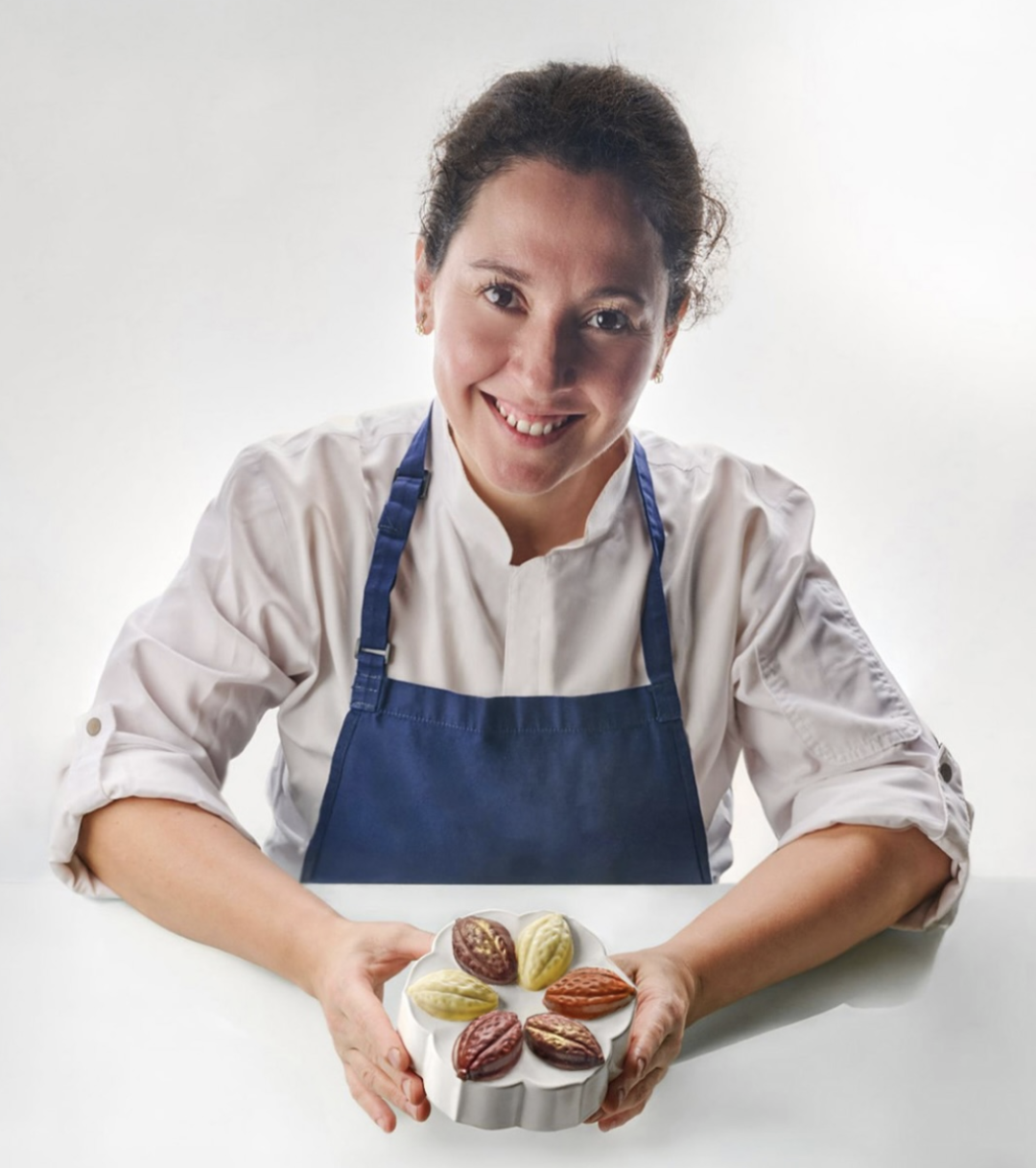 Fernanda Guerrero
Fernanda Guerrero
The menu presented a landscape where South American and Asian influences interwave. The opening bite was a tomato meringue with sweet shrimp, Patagonia Merken spice, coconut chips and hana hojiso — sweet, sour and lightly spicy, with a bright aroma that gave the shrimp depth and added a carefree tropical feel. Next came a ceviche featuring Hokkaido scallops with leche de tigre sorbet and green spirulina foam; South American and Southeast Asian spices resonated here. The scallops’ sweetness was not overwhelmed by acidity, creating a clean, balanced and refreshing start.
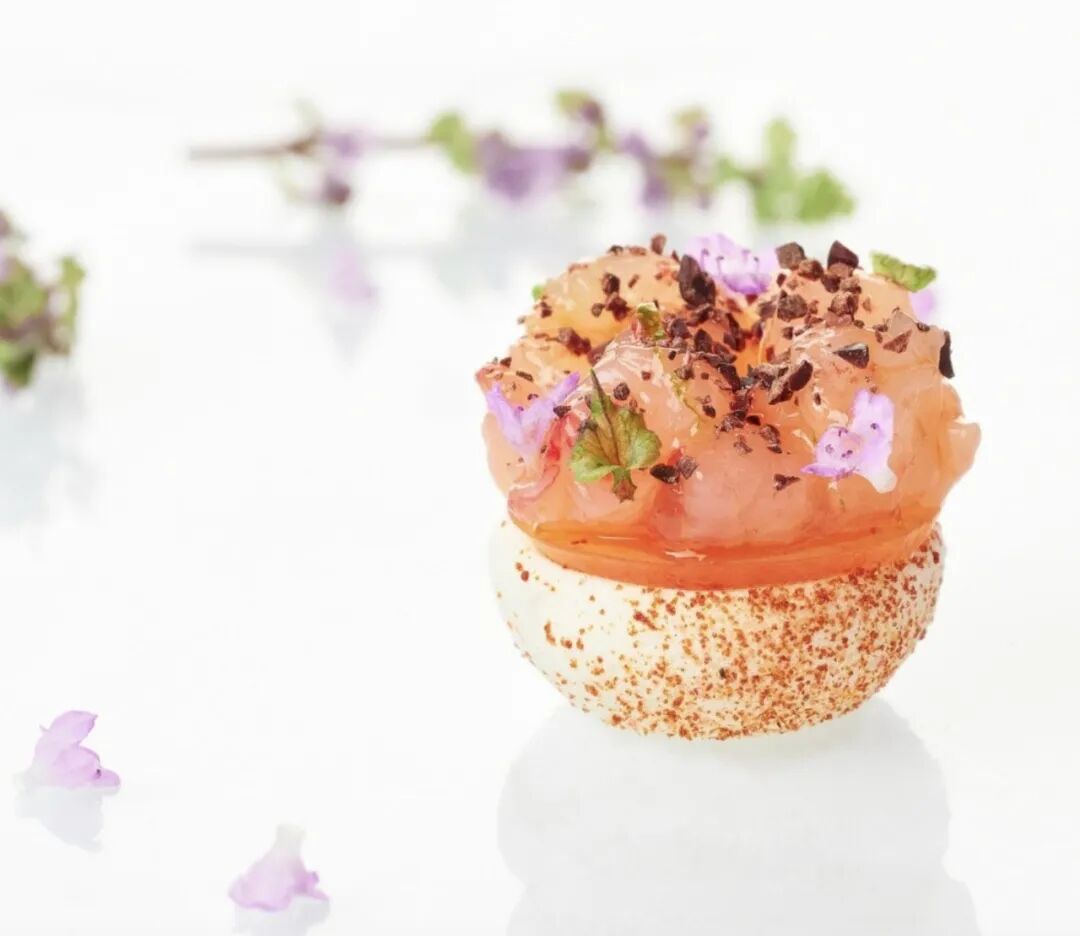 Ama Ebi, Meringue
Ama Ebi, Meringue
This was followed by “Coral,” combining Dulce and Wakame seaweeds with the Andean tuber mashua. Acidity, saltiness and seaweed aromas intertwined just right; the mashua brought a root‑vegetable sweetness that made the dish full yet light, giving a “can’t‑help‑but‑reach‑for‑another‑bite” balance. The fish main course, “Moqueca,” featured fish with puffed amaranth and a fish‑bone sauce. The cooking was perfect and the sauce refined. It encapsulated the restaurant’s ethos: deep flavours that remain light, with the fish translucent and a perfect balance of sour, salty and aromatic. It showcased the chef’s training in Japan and his ability to blend South American soul with Asian finesse.
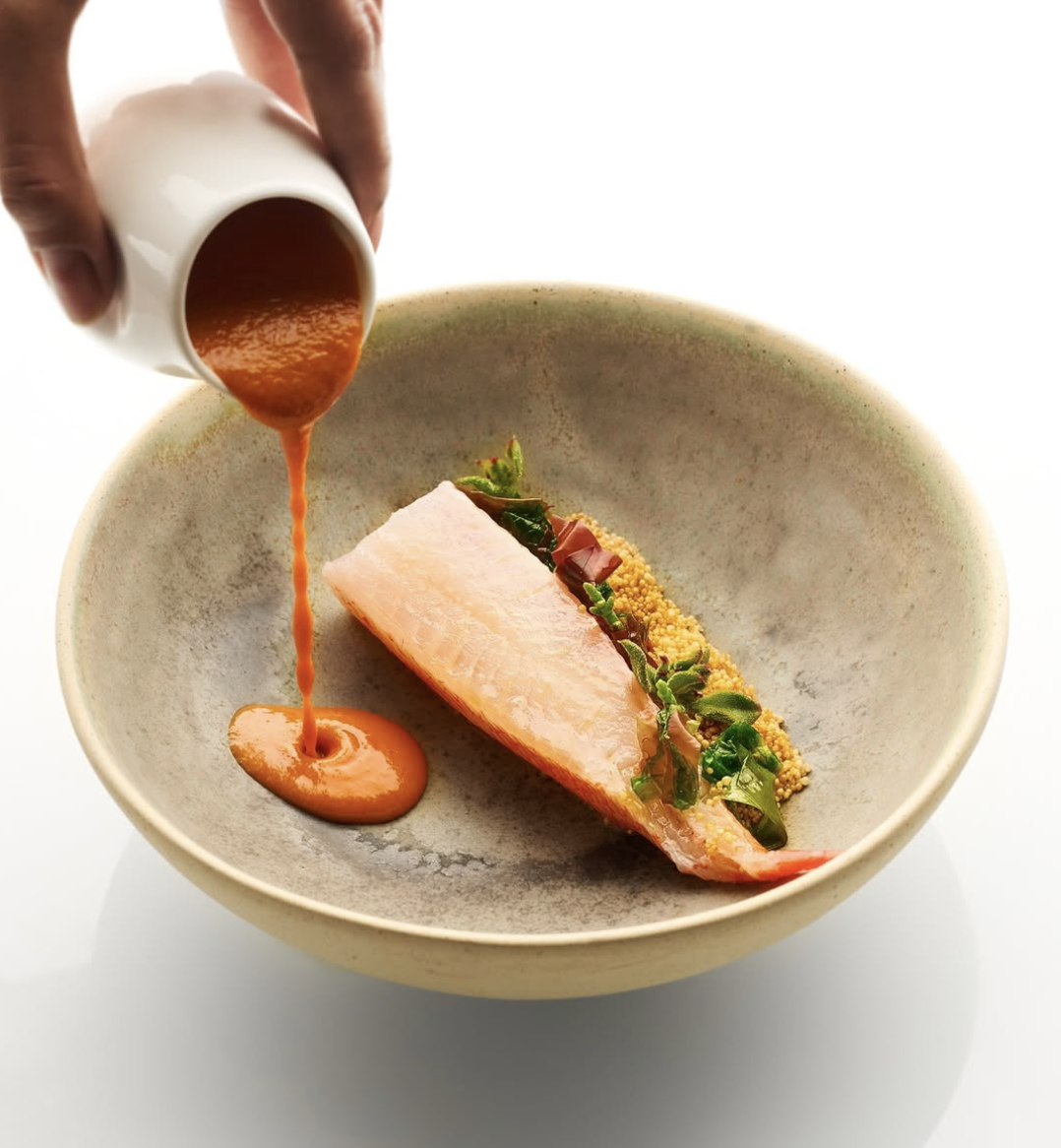 Kinki Moqueca
Kinki Moqueca
The meat course, “Pigeon with Aged Cacao Sauce,” served pigeon breast with a 696‑day‑aged cacao sauce over a pumpkin brioche gratin. The aroma was alluring, with a familiar yet gentle curry‑like tone; the skin was charred, the meat tender and the sauce rich. The pigeon legs hidden in the bread melded with the spices, evoking the warmth of South America — delicious and satisfying.
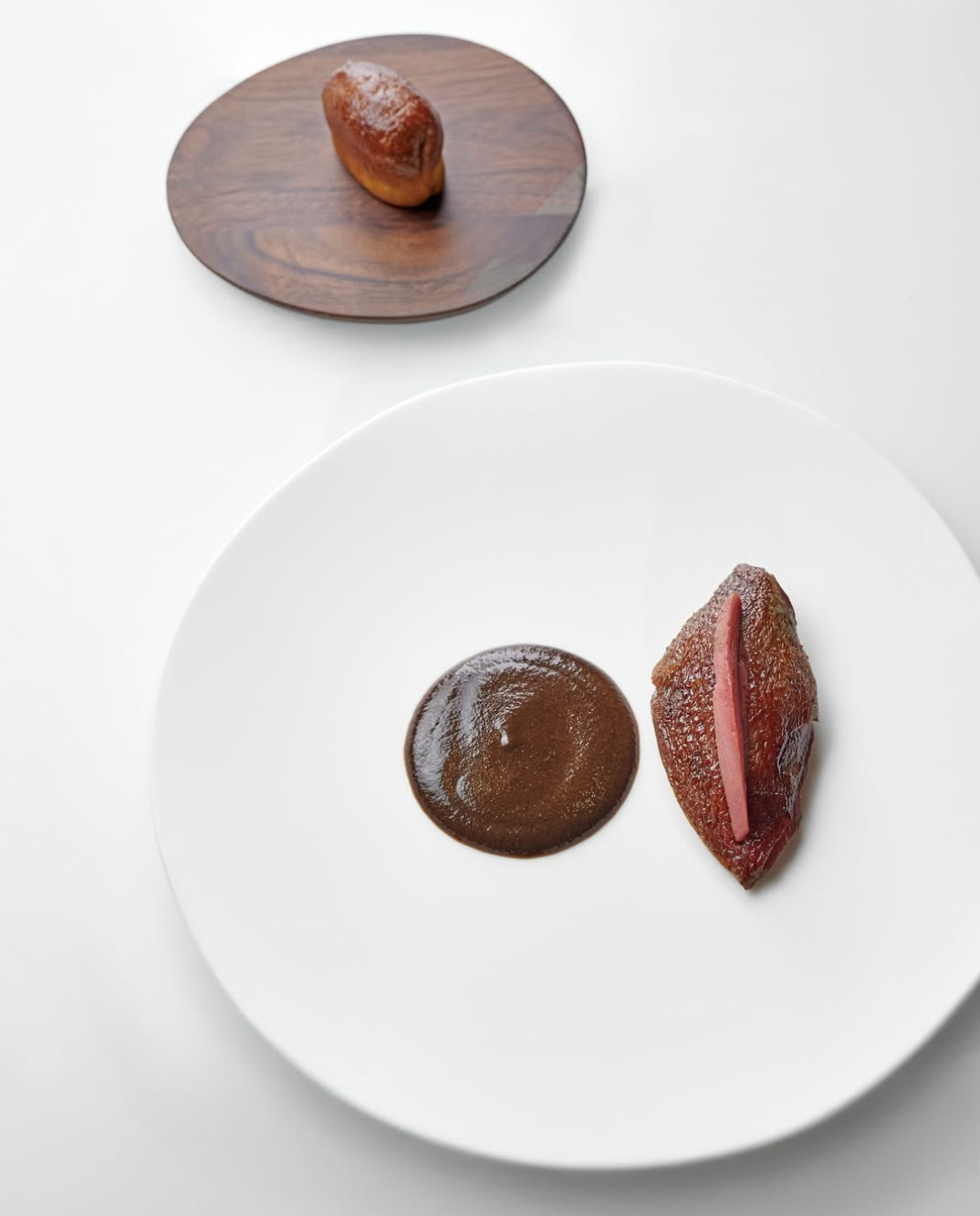 Pigeon with 696 days aged Ecuadorian cacao
Pigeon with 696 days aged Ecuadorian cacao
Fernanda said, “We’re not the romantic type of South Americans, and we don’t dance tango (laughs), but we want people to feel the heat and sincerity of South America through our food.
The dessert “Antarctica” used blueberries, raspberries and strawberries with a cinnamon sauce, dulce de leche oatmeal ice cream and goat’s‑milk ice. The three berries offered sweet‑tart notes, and the milk ice was silky — like enjoying “a dessert on a glacier,” with a penguin motif adding warmth.
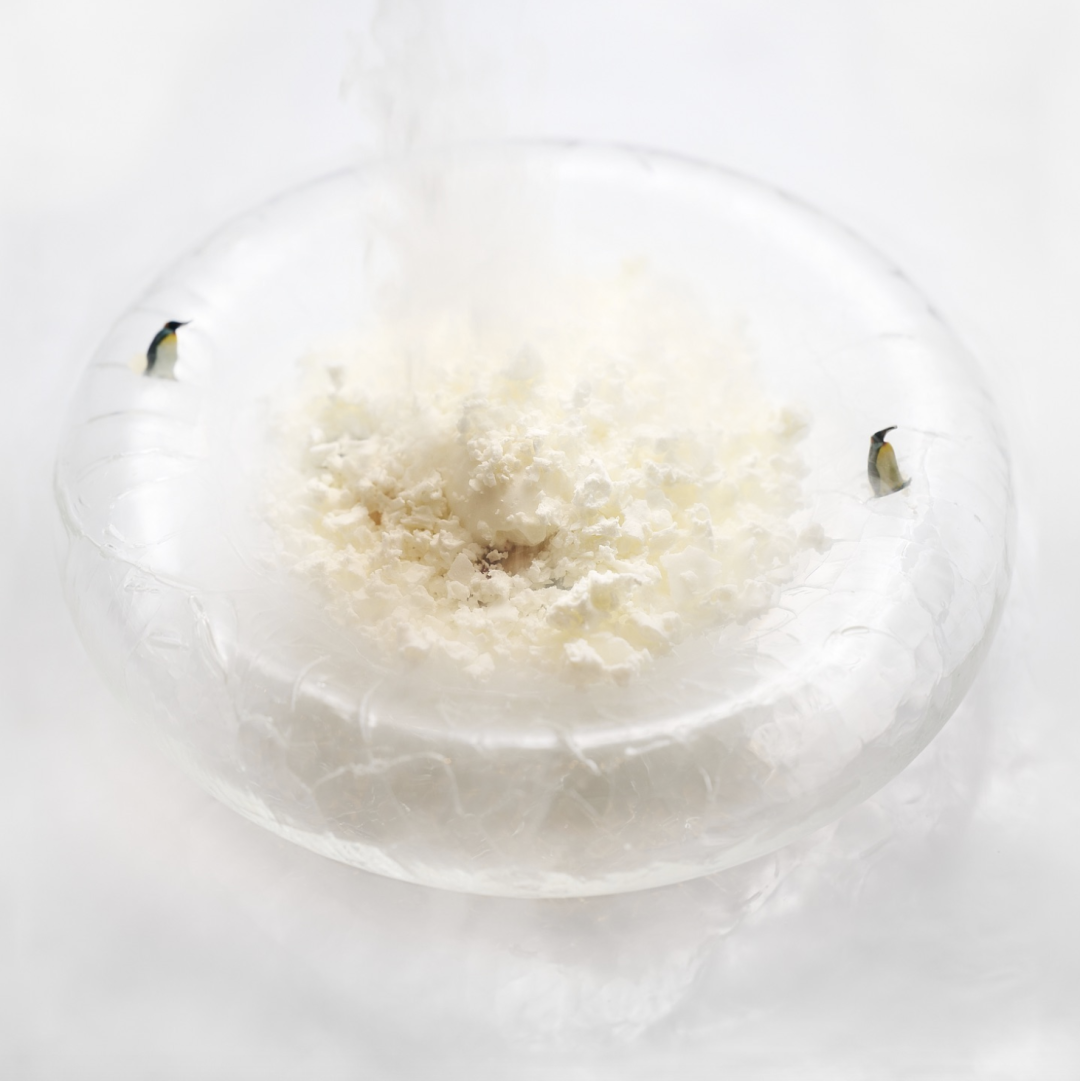 Antarctica
Antarctica
Finally, the “Carrito de Dulces” (Chilean Sweet Trolley) presented single‑origin chocolates and petits fours: white chocolate with roasted corn, mango‑chili jellies, coconut cookies, coffee tartlets and little frog chocolates. It was humorous and rooted in place, continuing the free South American atmosphere. For Fernanda, “desserts should be about memory.”
The menu often uses Chilean seaweeds, ancient South American grains such as amaranth and quinoa, Andean tubers, Patagonia’s Merken spice, and cacao and berries from South America. The restaurant also adopts the Asian principles of balance, freshness and restraint — using dashi, fermentation or sorbet to introduce acidity rather than heavy seasoning.
“Araya elevates South American cuisine from home‑style and regional to fine dining.” Many chefs are making history — like London’s Mexican restaurant KOL — proving that every cuisine has the potential to be refined. Young chefs’ awakening to their roots is essentially a return to origins.
The menu’s structure is mature; each dish flows into the next, delicious without missing a beat. At the end of the meal I told chef, “I’m waiting for your second star.”Araya’s cooking sets out from Chile’s Pacific coast, crosses the Andes and arrives in Asia, creating a unique personal palette and style.
Gold will shine wherever it is.
Author: Jocelyn 华姐
Photos: Jocelyn 華姐/instagram@araya_singapore

